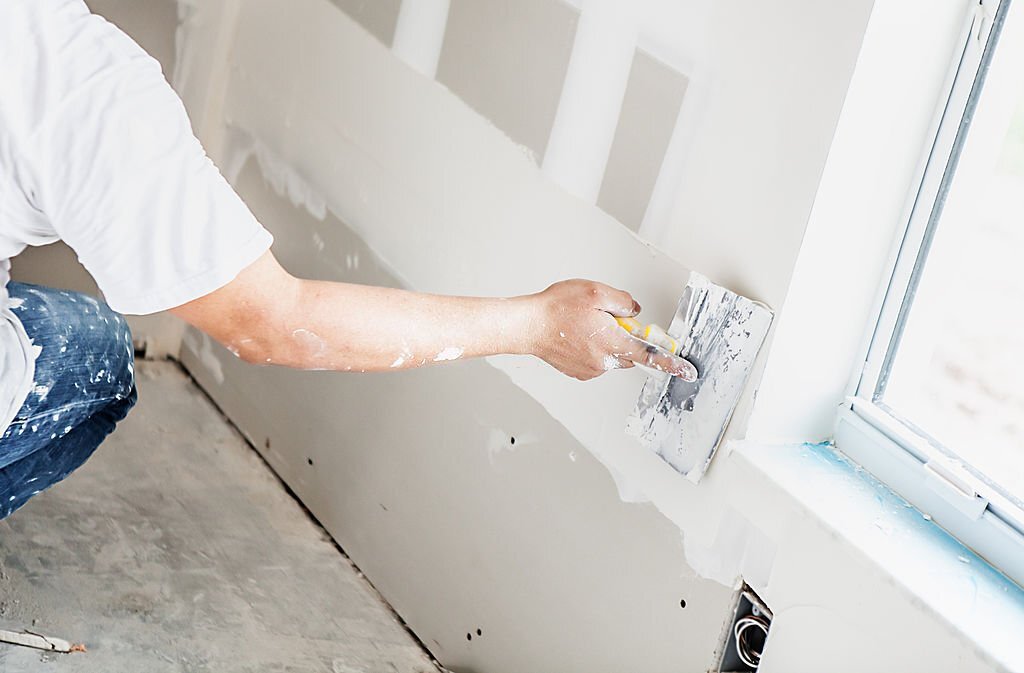In this article, we’ll discuss how to estimate drywall finish levels and how to use a drywall estimating template. We’ll also cover factors like drywall thickness, nailheads, and how much compound to use. By the end of this article, you’ll have a clear idea of the cost of your drywall project. Whether you’re a home renovator or a contractor, our guide will give you all the information you need to make an accurate estimate.
Getting a Rough Estimate for drywall
Getting a rough for drywall estimating installation depends on the scope of the job. A contractor should include in his or her quote the cost of materials, labor, and the estimated duration of the project. He or she should also list down the types of drywall used, as well as the cost of the screws, tape and drywall mud. These are just a few of the things that must be considered when preparing a bid.
The drywall is sold in sheets, and you will need to determine the square footage of the walls by multiplying the height of the room by the length of the wall. This will give you an approximate number of sheets needed for the project. If you need more than one sheet, you will have to order more drywall sheets than you need. The square footage will also depend on the level of finish you want. The higher the level of finish you want, the more you will need to purchase.
In general, a textured finish is cheaper than a smooth one. Some drywall companies offer bulk discounts to their customers. Also, these companies understand the products better than big-box stores. If you buy bulk supplies, you can save even more money. A drywall specialist will know the best ways to save you money and ensure that your project is completed to your satisfaction. Remember to ask questions, and have a written contract before hiring a drywall installer.
In order to get an accurate estimate, make sure you include all cost factors involved. In addition to materials, you need to consider labor costs. If you plan to hire more than two workers, you must add the total wages of the workers. If you pay them per hour, you will need to factor in labor costs. Doing so will make your drywall finishing project more accurate. Then, you will be able to compare costs between different drywall contractors.
Other factors that affect the price of drywall installation include the size of the room and the level of finish you want. Small rooms may require a lower level of finish, while large rooms might require more materials and more labor. Additionally, you may need to add insulation to new walls. Batt insulation is most common, but other options can cost anywhere from $0.10 to $30 per square foot. This will affect the overall cost of your project.
Using a Drywall Estimating Template
Using a drywall estimating template is a great way to streamline your estimating process and ensure that every estimate is accurate. Not only does it make the process easier, but it ensures that you always provide accurate cost estimates, which helps you win more business. When presenting a service proposal to a potential buyer, a comprehensive estimate can often make or break the deal. That’s why it’s crucial to follow the guidelines for a successful bid and ask for clarification questions from your buyer.
It’s important to estimate materials accurately when performing a drywall job. For example, every square foot of drywall requires 0.053 pounds of joint compound. You can divide the number of square feet by 0.053 to get the amount of joint compound and screws needed. Once you know how much joint compound and screws you will need, use a drywall estimating template to make your calculations easier. The information you input will automatically create an estimate that will help you avoid making costly mistakes.
Another helpful feature of a drywall estimating template is the inclusion of material costs. In addition to a price list, an accurate estimate should include information on the costs of tools and materials needed for the project. A list of the current costs of materials is invaluable when determining how much drywall you need to cover a certain area. For example, a room that is 12′ wide by 16′ long requires 108 square feet of drywall per wall. Another example would be a 16′ x 12′ wall, which requires 144 square feet of drywall.
In addition, the drywall estimate will depend heavily on the size of the job, which can take longer to estimate if it requires more than 75 sheets. Using a drywall estimating template will also allow you to use square footage as a baseline when estimating costs.
Calculating Drywall Finish level
There are many methods for calculating drywall finish levels. Many drywall contractors use a combination of these methods. Using the formula below will ensure that you get the right level of finish for your room. Below are some examples of drywall finish levels. For a classic look, level four is a good choice. Apply an extra coat of joint compound and then sand the dry compound. Level five involves applying a skim coat. To calculate the finish level of a wall, thin joint compound is rolled on the wall with a thick-nap roller, scraping off the excess immediately. A series of dabs of mud are applied in 3 to four-inch circles, smoothed across the surface, and scraped off immediately.
To calculate the drywall finish level, first determine the wall texture. If your walls are high to medium in texture, level three or four is an appropriate choice. On the other hand, if the walls are light, level five is the best choice. However, if you want a more durable finish, level five will cost you $2.25 per square foot. You can always upgrade to a higher level if you like.
A higher level of finish requires more materials and a more skilled hand. For level five, the contractor needs to apply an additional joint compound and skim coat over the entire wall surface. This requires a higher amount of supplies, so consider the costs of Level 5 and Level 6 in your budget. This option is typically used in situations where you’re not able to choose the final decoration aesthetic. If you’re a contractor looking for a higher level of finish, consider hiring a professional with a background in drywall installation.
Level 4 is the standard drywall finish level for most drywall projects. This level is suitable for most paints and other non-glossy finishes. Level 4 also allows for textured, non-continuous wallcovering and light texture. Even though level 5 has higher requirements, it doesn’t take away from the function of a wall system. And a level 4 is fine for some purposes, but not for everything.
Considering drywall Thickness
When estimating a drywall job, you need to take into account the amount of unused surface area and thickness. You can find out how much drywall you need by multiplying the total square footage by 1.1. Next, you’ll need to estimate the amount of labor required to complete the project. Remember to separate the labor time required for each job. For smaller drywall projects, it might be easier to divide the total square footage by the number of hours that are needed for the project.
While drywall installation can be done by one person, you’ll need at least two people for the job. You’ll also need to account for time and debris removal. A professional should double-check all work to avoid paying more than you need to. You can save time and money by using a drywall estimating template. You can also download a drywall estimate template that is free to download.
Using a tape measure is a great way to determine how much drywall you’ll need. If you’re doing a single-story job, the length of the sheet can vary widely. A single-story home has an average length of 3 feet, while a two-story home has a standard height of nine feet. The length of the sheet can influence the cost of finishing it.
Depending on the application, drywall thickness can affect the cost of a job. Generally, the thickest drywall is 5/8 inches. This type is ideal for commercial projects and is fire resistant. In comparison, thinner sheets are often used in homes, as they are easier to bend. You can also use 1/4-inch drywall to create curved walls. In addition, 5/8-inch drywall is commonly used in garages and furnace rooms.
In general, a three-foot-thick wall could require two 30×10-foot walls. These walls would be covered with lightly sanded joint compound. For an average-sized 300-square-foot room, you might want to consider level three drywall. This is the most affordable level of finish, but it would cover just a bit of joint compound. And level three drywall would cost between $0.75 to $1.76 per square foot.




